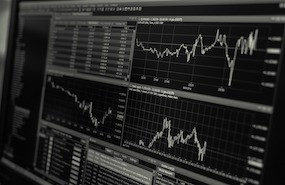Weekly market update - 22nd of June 2020
Written and accurate as at: Jun 22, 2020 Current Stats & Facts

Concern about the possibility of a material second wave of COVID-19 infections has increased over the past week. This reflects a rise in cases in some parts of the US and other countries. Here in Australia, the spike in Victorian cases needs to be watched. Although small in number it may challenge the theory of a faster re-opening here. The market rose +1.6% last week despite these issues emerging. This was driven by continued constructive economic data and optimism on further policy support. There was some rotation back to growth — the market sees value stocks more at risk in a potential second wave.
Second wave risks
Concerns of a second wave are focused mainly on the US. However, there are also clusters in Beijing, Germany, and acceleration of cases in Latin America and India along with an increase in Victorian cases. The issue from the market’s perspective is the degree to which this will impede the recovery. Most think it unlikely the US will return to a broad lockdown, but targeted restrictions will limit some activity. The larger risk is the possible negative effect on consumer and business confidence. This is a critical test of the US’s ability to absorb periodic increases in infections. If it can be managed, this may begin to build further confidence. The headline numbers from the US are not encouraging. New daily cases have almost returned to where they were at the previous peak. The concern is this may lead to more hospitalisations, more stress on ICU units and more deaths. Increases in US cases are concentrated in certain States. For example, Texas has seen cases double in the last few days while Florida is experiencing new daily cases at double the rate of its peak. Declines continue in north-eastern States that were hit hard earlier. At this point, hospitalisations are not picking up on a nationwide basis. The increases in Texas and Florida are not at concerning levels. Since the previous peak, a number of medical developments have emerged — notably awareness of the importance of anti-coagulants and steroids which can help reduce the severity of cases. ICU capacity has also increased. The key issue to watch this week is whether the combination of much higher testing, physical distancing and better care prevents a significant escalation in severity.
While the uptick in Victorian cases is relatively small in number, it may be highly significant for the market. The consensus view is that disease has been successfully suppressed in Australia, which has led to a more optimistic view on the Australian economy relative to other countries. If people start to expect restrictions around the country will remain in place longer than first thought, it will have a meaningful impact on market optimism and positioning within it.
Economy
Economic data remains constructive and is doing enough to offset burgeoning concerns over a second wave at this point. Indicators out of the US remain strong. This partly reflects the fact that the north-eastern States so far avoiding a second wave make up a larger part of the economy than those facing the need for potential new restrictions. Last week’s US retail sales data were better than expected. The Citi economic surprise index – which tracks the outcome of various data points versus expectations — is at its highest level in 18 years. In Australia employment data was also better than expected. Monthly hours worked fell -10% from March, versus the -15% to -20% that the market had predicted.
Valuation versus liquidity
Liquidity is helping prop up the market despite more negative news – and is trumping concerns about near-term valuations. The Fed and other central banks have pumped money into the system, most of which has found its way into cash and bonds. This is reflected in the surge in FUM in retail money market funds. There has also been record issuance of investment-grade and high-yield bonds. The overall market position has become more neutral than a supporting factor. But it is far from a headwind. The liquidity program has allowed access to capital so companies can sort out their balance sheets and become more resilient.
Markets
Key indicators of sentiment were largely unchanged last week. US 2-year bond yields fell by 1bp to 0.19%. Gold was up 1% and the EUR/USD was down -1%. Only oil saw a material move, up +5%, as further evidence of supply discipline came through. Resources underperformed on indications that Vale was beginning to ramp production in Brazil. This may be short-lived given the recent surge in cases. Iron ore was off -1% to $103. Fortescue Metals (FMG, -6.9%) was the worst-performing stock in the ASX100. BHP (BHP, -2.7%) and Rio (RIO, -1.6%) were also off. Elsewhere, stock movements reflected a broad rotation from value back to growth and underperformance of companies most at risk from a delayed reopening. Sydney Airport (SYD, -6.4%), Star Entertainment (SGR, -6.1%), Flight Centre (FLT, -4.8%), Vicinity Centres (VCX, -4.1%) and Scentre (SCG, -3.5%) were among the biggest underperformed. On the growth side, Afterpay (APT, +13.2%) was again among the market’s strongest. Wisetech (WTC, +10.3%), Altium (ALU, +8.3%) and ResMed (RMD, +8.2%) also outperformed.










